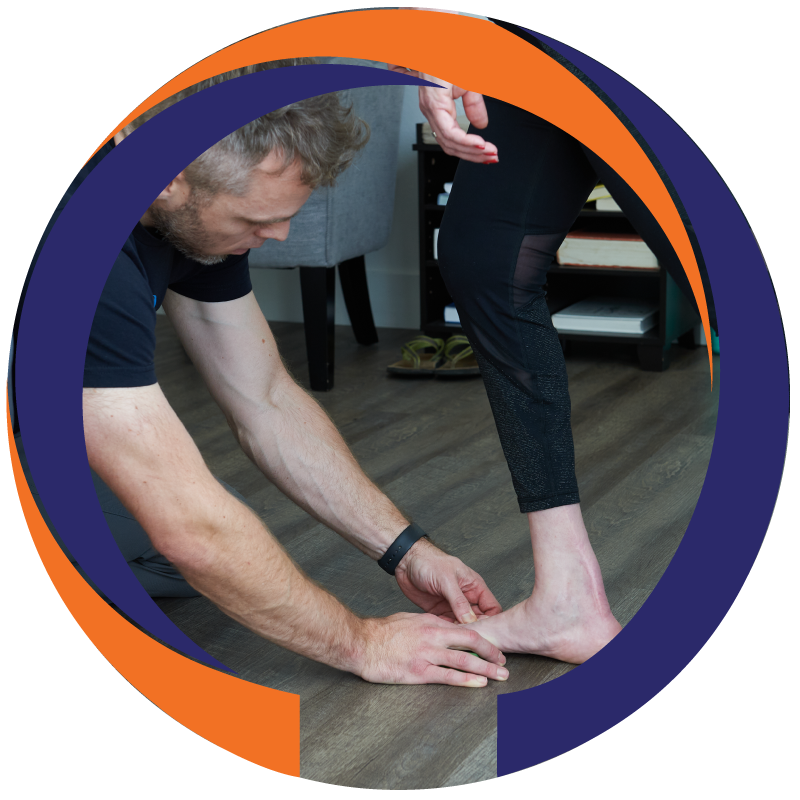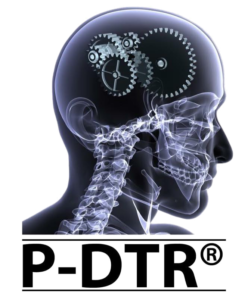Proprioceptive – Deep Tendon Reflex (P-DTR®)
Schedule a free phone consultation
Proprioceptive – Deep Tendon Reflex (P-DTR®)
What is Proprioceptive – Deep Tendon Reflex (P-DTR®)
Proprioceptive Deep Tendon Reflex (P-DTR®) is a system of therapy created by Dr. Jos Palomar. His discoveries indicate that proprioception (sensation of touch, pressure, hot, cold, pain, etc.), and the way the body processes the information from these receptors, is paramount in determining neuromuscular responses throughout the entire body. Motor function is not just determined by the motor system, but rather is modified by the inputs of these receptors.
P-DTR® deals with the various sensory receptors (proprioceptors) of the body and the way they affect and modify our movement patterns. These receptors (those for pain, stretch, pressure, hot, cold, vibration, etc.) all send information to the brain for processing and the brain takes this feedback into account when making decisions regarding our movement. The body discerns its best movement and motor response based on a wide variety of factors. These proprioceptive responses help the brain tell muscles how to respond.
However, if the information the brain receives is incorrect, its response will be faulty and result in potential pain or dysfunction. The skill used in P-DTR® aims to repair these faulty connections through a use of muscle tests and the stimulation of deep tendon reflexes. By re-forging a connection of healthy proprioceptive responses. In turn, the brain will be better equipped to deal with pain management and proper motor function.

PDTR | Proprioceptive | The Use of Proprioception at Pain and Performance Solutions

PDTR | Proprioceptive | The Use of Proprioception at Pain and Performance Solutions
Mechanoreceptor System (body’s software)
P-DTR® addresses musculoskeletal problems by focusing on an important, but largely overlooked apparatus of the human body: the mechanoreceptor system. Think of the receptor system as “software” and bone, muscle, ligament and tendon as “hardware.” As with computers, hardware problems are best addressed at the level of the hardware, but when the problem is at the level of the software, no amount of work on the hardware can fix the problem. The main goal for P-DTR® practitioners is to solve any “software” issues to correct or lessen the “hardware” malfunctions.
Not everyone realizes that our muscles in our bodies and our brains must work together to create a balanced effect. What most everyone does know, is that muscles move the body and the brain moves the muscles. Fewer are familiar with the simple fact that it’s the mechanoreceptor system or software that provides the brain with the information it needs to tense, and release muscles as needed for good functioning and pain-free living. Without accurate uncorrupted information from the mechanoreceptor system, the brain-muscle connection cannot function optimally. Breakdowns in this communication can result in chronically weak or chronically tensed muscles showing up as pain and/or difficulty with movement.
Surgery, chiropractic, massage, physical therapy are traditional therapies that don’t incorporate the mechanoreceptor system in their area of focus. These therapies haven’t provided substantial ways for identifying and addressing mechanoreceptor dysfunctions. That’s why, in cases where a patient has a problem at the level of mechanoreceptor, even skillful surgery, chiropractic adjustment, massage or physical therapy series will continue to be behind and won’t provide the most optimal results.
Is it possible to diagnose dysfunctions in the mechanoreceptor system? The answer is yes. With P-DTR® it’s possible to do so with a high degree of precision. Is it possible to treat dysfunctions in the mechanoreceptor system? Once again, the answer to this question is a resounding yes. The reason for the resounding yes is, due to the unique nature of the brain’s relationship to the mechanoreceptor system, improvements cannot only be quick, but also very long lasting and in some cases permanent.
What are the Benefits of P-DTR® to Sports
Any type of athlete knows that their bodies can only go so far. Even with that knowledge, they’ll push their bodies past that point to achieve the ultimate success. When this happens, an athlete can face the realization that living up to that performance every single time without some sort of therapy, will not be able to be sustained. The benefits to athletes that participate in Propioceptive – Deep Tendon Reflex therapy is:
- Increased mobility
- Accelerated injury recovery
- Improved muscle coordination
- Long-term benefits
- Increased overall balance & well-being
- Improved performance
- Relieves stress from routine repetition
- The Realization
The idea that we will need some sort of therapy to help our mind and body reconnect and achieve balance is the very reason why new forms of therapy keep getting invented. All our bodies are different, but we are the same in the notion that we can’t always do what we want to do. The great Quarterback of the New England Patriots, Tom Brady, is definition of that. At 40 years old, he is still playing in the NFL at a high level and it’s due to his realization that, as he gets older, he understands his body has changed, and he needed to change with it. If you look up his diet and therapy plan, you’ll realize that everything he does is because he listens to his body. He understands his Mechanoreceptor System and plans his life around it.
Not all of us are gifted like Tom Brady to have all the resources readily available to him. But, there are resources out there for us. We just need to take the time to realize, there are forms of therapy out there. Proprioceptive – Deep Tendon Reflex therapy is one of those forms.
The overall goal of Proprioceptive – Deep Tendon Reflex® therapy practitioners is to help your mind and body’s deficiencies, or injuries recover at a pace specific to the individual’s needs. An athlete’s body is susceptible to a greater strain because their system has grown to believe that’s the way it should work all the time. Our job is to help your body maintain that level, or to recover from injuries or exhaustion due to that level of stress.
FAQ
Want to know more about your session? Check out our FAQ page and get answers to our most popular questions
Services
Our techniques include ART®, SFMA™, AiM, NKT, and P-DTR®. Visit our page to learn more about them.
About
Julian Corwin’s journey took him from Engineer to specialized body worker. Read more about how he applies his skills for you.